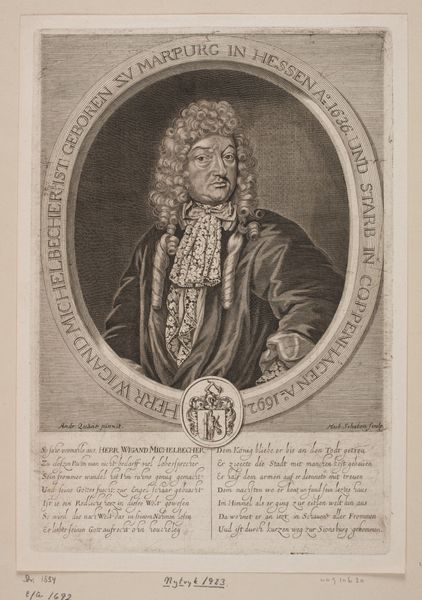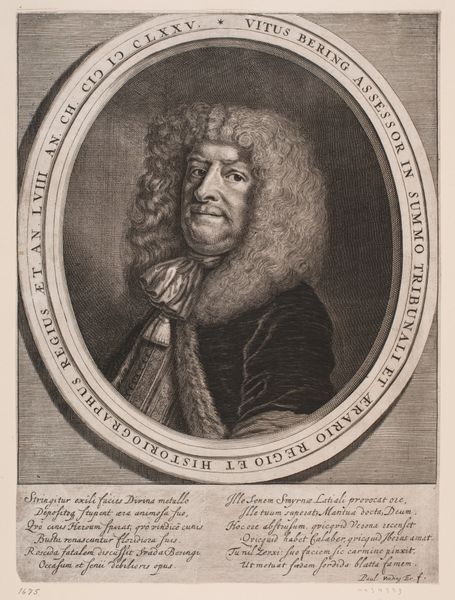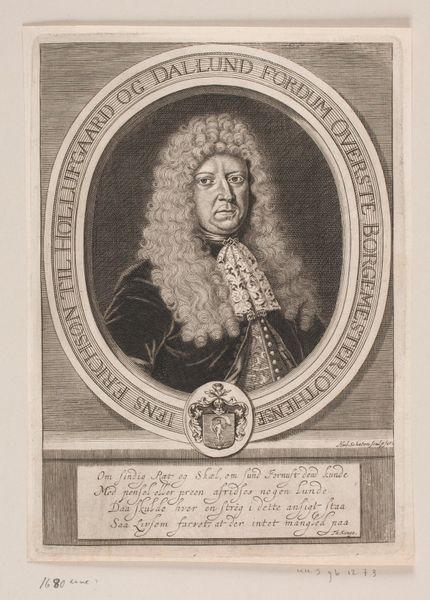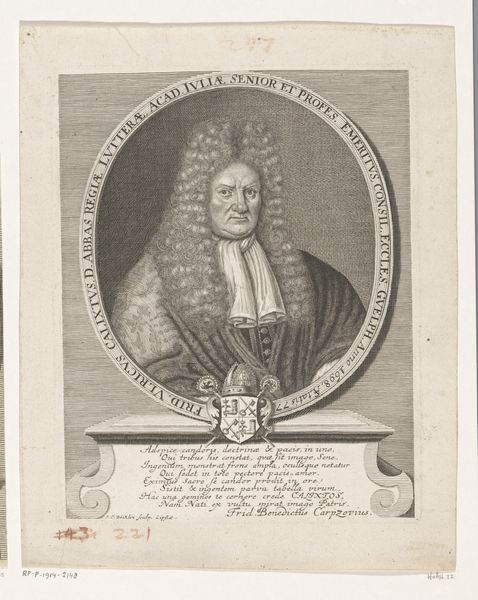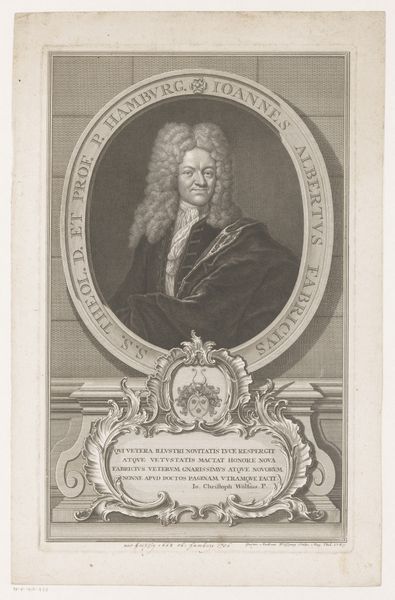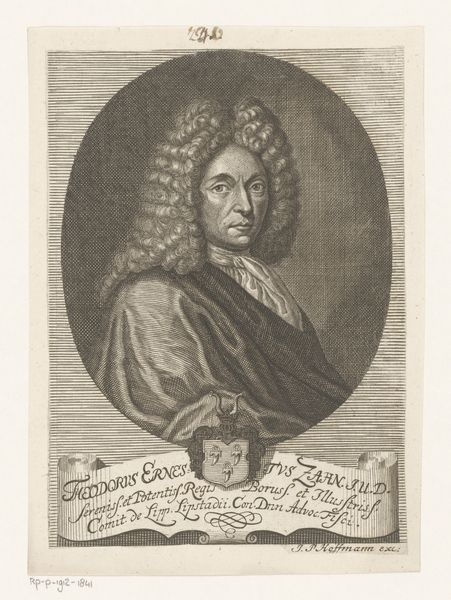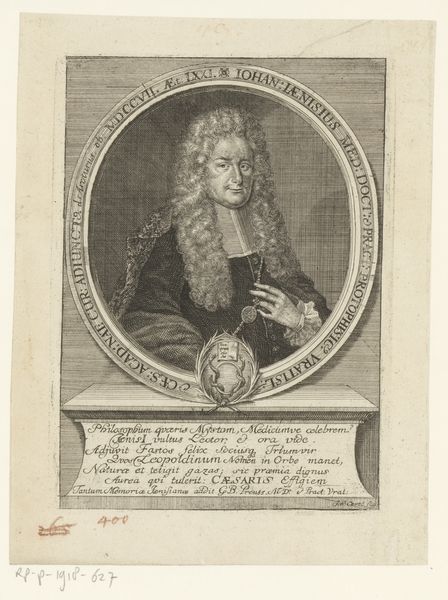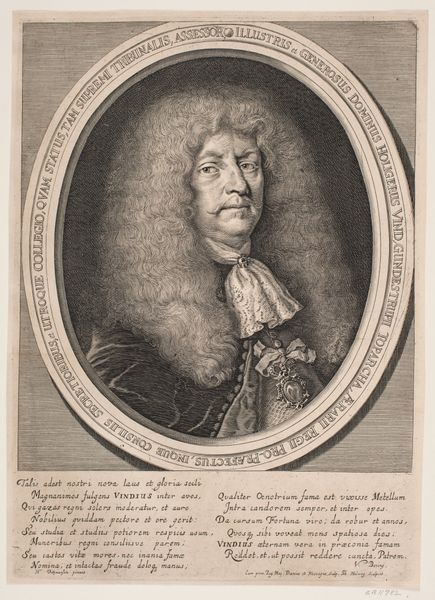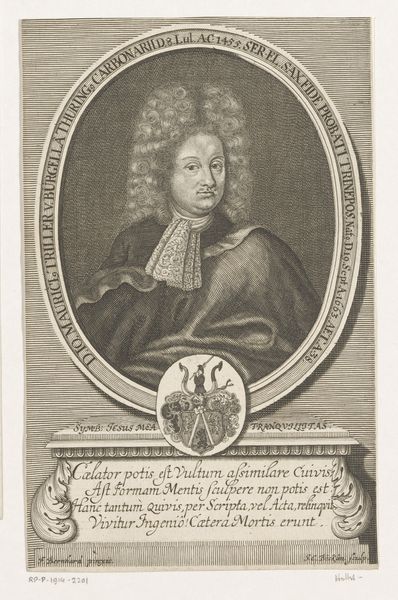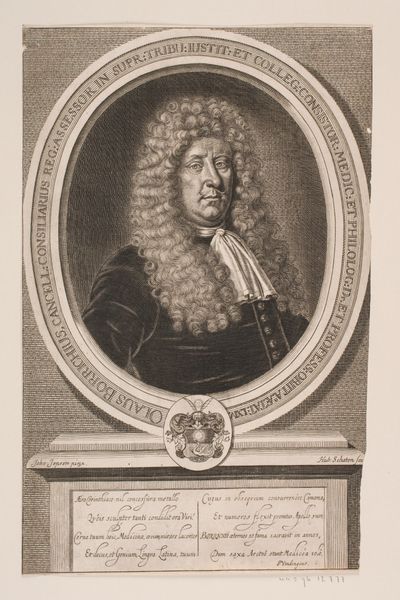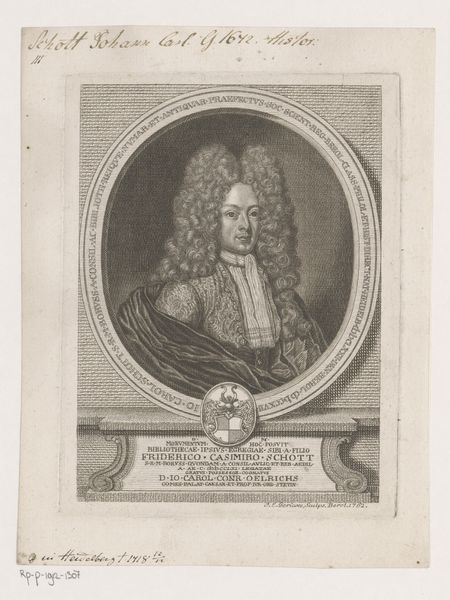
print, engraving
#
portrait
#
baroque
# print
#
history-painting
#
engraving
Dimensions: 285 mm (height) x 192 mm (width) (bladmaal)
Curator: This print, made in the 17th century, is a portrait of Købmand Gysbert Wigand Michelbecker by Hubert Schaten. It's rendered in engraving, a style associated with the Baroque period. Editor: My first impression is of contained power. Despite the circular frame and the ordered lettering around him, there’s a strong presence about this merchant. The tight curls and the fabric’s ornate texture are arresting. Curator: Absolutely. Consider the context. The Baroque period prized ornamentation and a sense of drama. Michelbecker, being a merchant of status, would have been keen to present himself in a manner that signified wealth and stability. Editor: The circle, too, could be seen as symbolic, containing, delineating Michelbecker's world, the tangible evidence of his success within his sphere of influence. The elaborate collar seems almost too ornate, like a cage, visually anchoring his face, a common motif in many formal portraits. Curator: Exactly, the visual elements serve not only to capture his likeness, but to communicate layers of identity. Look closely at the lettering – it tells us he was born in Marpurg in Hessen and died in Copenhagen. This detail contextualizes his journey and suggests a degree of cultural assimilation, perhaps even a mark of a well-connected trading life. Editor: And then, lower down, is his heraldic crest. What does this signify about his aspirations or established position within society? It speaks volumes about legacy and lineage. Curator: Yes, his lineage clearly matters, grounding the portrait in cultural tradition. The image aims to create an enduring impression, one meant to be viewed for years to come. It evokes both respect and perhaps a touch of guardedness. Editor: Agreed. This image of Michelbecker presents a specific construction of identity: success, lineage, status, but within very clear visual and societal boundaries. It speaks to the era's desire for control and order. Curator: I think looking closely at such works provides an insight not only into the person represented, but the values that defined their era. Editor: Indeed, it’s like deciphering a visual document. Each detail a word offering new context, together conveying an essential story.
Comments
No comments
Be the first to comment and join the conversation on the ultimate creative platform.
